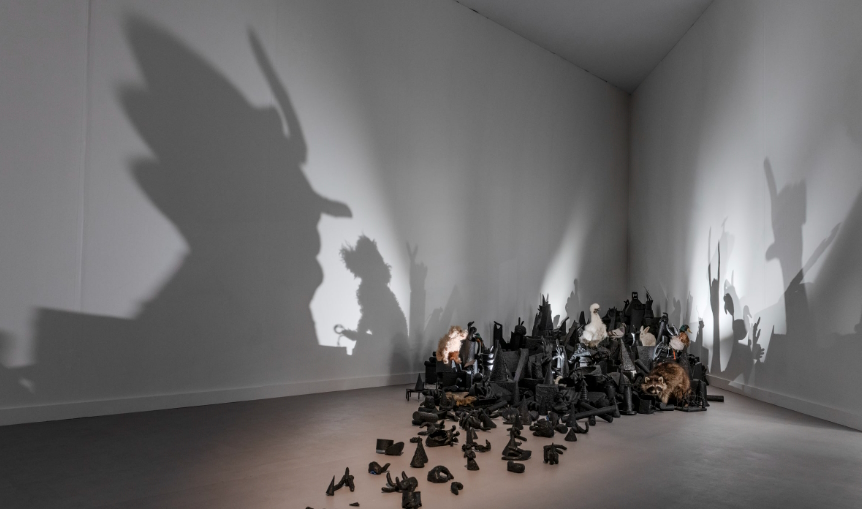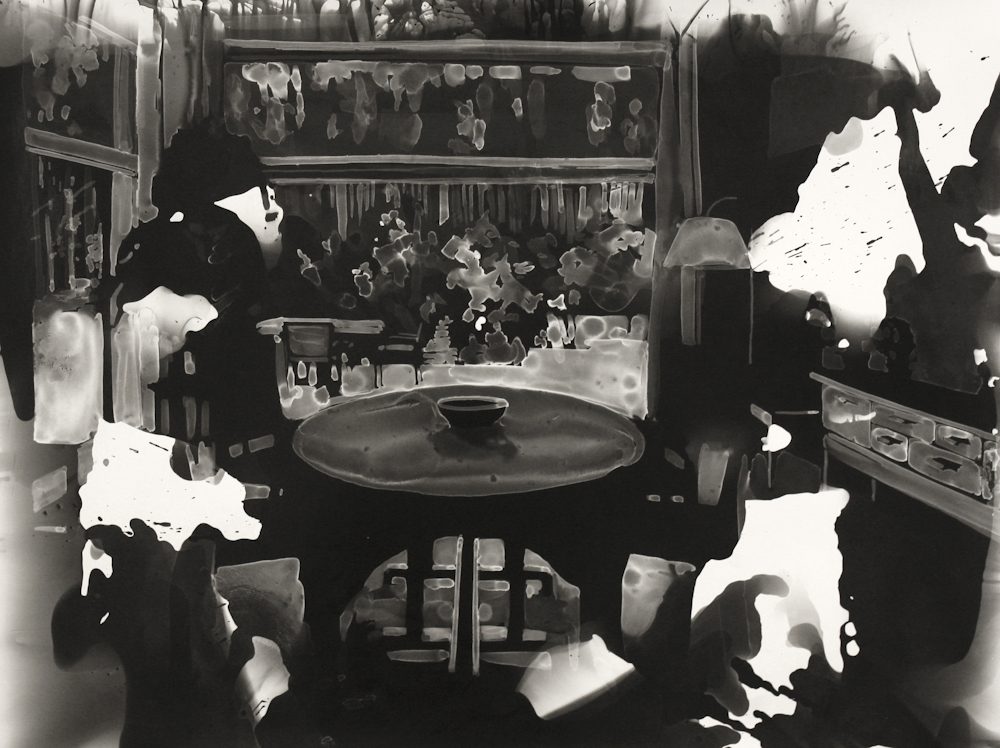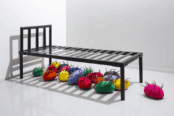Annette Messager’s work and her persona as an artist are mercurial and play with definition and genre. There is a force to her use of fabrication that bursts beyond the static confines of straight assemblage or art brut. The construction of her works from objects and materials functions as a play with the history of materials, narrative and the creation of fertile, often dark, territories suggesting past experiences of pain and knowledge.
Whether these places are remembered or fantasised is often left opaque. Often, objects with loaded meanings are transmuted dramatically; pornographic images redrawn, children’s toys on spikes. It’s done in a way that suggests less the artist herself and more the intimacy with how we reflect on the world around us. In a recent interview with Hans Ulrich Obrist, Messager reflects on drawing versus painting by saying, “A drawing is always spectral, ghostly, unlike painting which is more assertive” (Messager 2021). It’s in this idea of the spectral, the constant peripheral vision of everything, the world beyond the camera obscura’s pinhole image, the arch suggestions of events, that Messager’s work punches through.

Born in Berk-sur-Mer, France in 1943, and since the 1970s Messager has been based near Paris in Malakoff, where her artistic forment has mixed the personal and the fictional through a transposition of varied components such as handwriting, objects, taxidermy, drawings, construction, documents, photographs, fabric, embroidery, sculpture and installation. Defying easy categorisation, over the decades Messager’s work has been defined by (or accused of) using the principles of assemblage, collection and theatrical display, through which she has implied fairy tales, mythology and doppelgängers. Her play with the idea of objects, or objects as the signifiers of ideas, has created a mystery around her work. And this linguistic, or semiotic, play between the object and its implied meaning is never stronger than in her use of words themselves.
“The words I write are a part of the drawing. Often, I use them in repetition. They become incantations, litanies. Of course, the meaning of the word is important, but the form of its inscription is important as well, the writing, and the sound it produces, its song. I dance with words.” (Messager 2021)

This three-dimensional way of working with words, or images, or objects as a catalyst is the key method of how Messager’s works operate as an installation. She is weaving together universal intimacies that strike us on a personal level. The pornographic images, the beauty salon, the childhood photos, the nascent revelation of animal corpses with their knowledge of death, time, and unbeing are reworked, often eroded, by the artistic process. They are not found objects per se, rather reconstituted or re-presented, just as our own memories are at once touched up and degraded whenever we handle them. Things become true to us regardless of the facts. Or indeed chronological order. Messager’s interest in the vernacular is well documented:
“I’ve always been interested in devalued arts. As a woman, I was already a devalued artist. Being a member of a minority, it is in the order of things that I should be attracted to so called marginal objects. From there, doubtless, also comes my taste for folk art, proverbs, the rough art created by the insane, maxims, fairy tales, the art of the everyday, embroidery, film… I think minorities become strong precisely because they take advantage of their own strengths, and not because they try to imitate those of the majority…” (Marcade, 1989)

In Messager’s oeuvre, what may come across as abstract is produced through a personal process. The objects she uses regularly emerge from items that resonate with her (things she collects) or are derived from personal association (pictures of friends). When asked about her use of a “marginal” object, she quickly clarifies an important distinction between what others consider marginal and her own practice:
“I don’t work with objects that I consider marginal, on the contrary, they are part of my everyday life that you can find at home, in my house: fabrics, stuffed animals, broken toys… There’s everything at home, newspapers, books, radio, television… I’ve photographed a lot of my friends, their bodies, which I’ve fragmented into ex-votos.”
The point then is that these objects, while ephemeral, are deeply woven into… (read more in Trebuchet 15)
Annette Messager, Laisser aller, Marian Goodman, 79 rue du Temple, Paris | 8 March – 11 May 2024
Read more in
Trebuchet 15: Installation
Featuring:
Installations as theatre
Giuseppe Penone
Michael Landy
Annette Messager
Karolina Halatek
Sounds Art as Installation
Jean Boghossian
Jon Kipps
Chantal Meza

Writer and academic Cartagena works in the arts polishing bios and gallery notes in the pursuit of clarity. He also lectures, though with enough opacity to impart wonder.






















